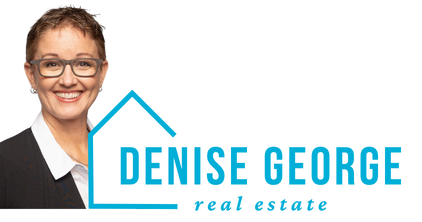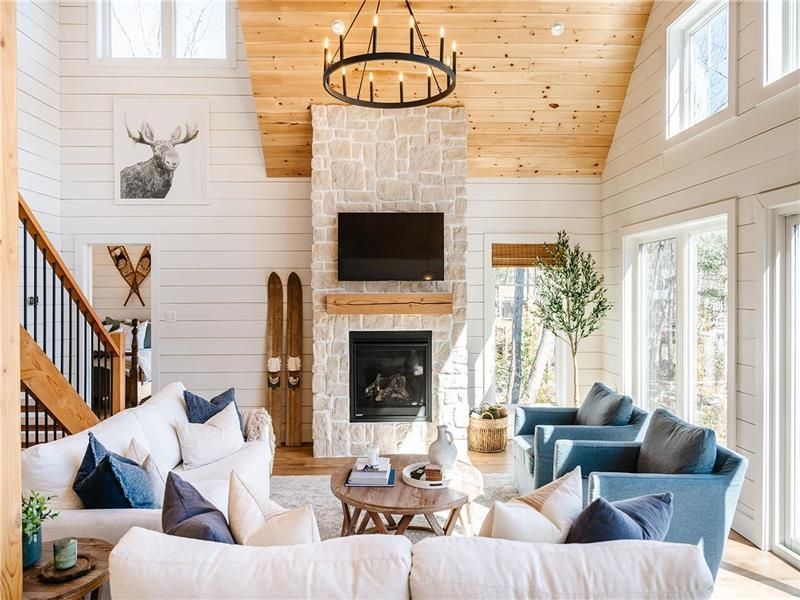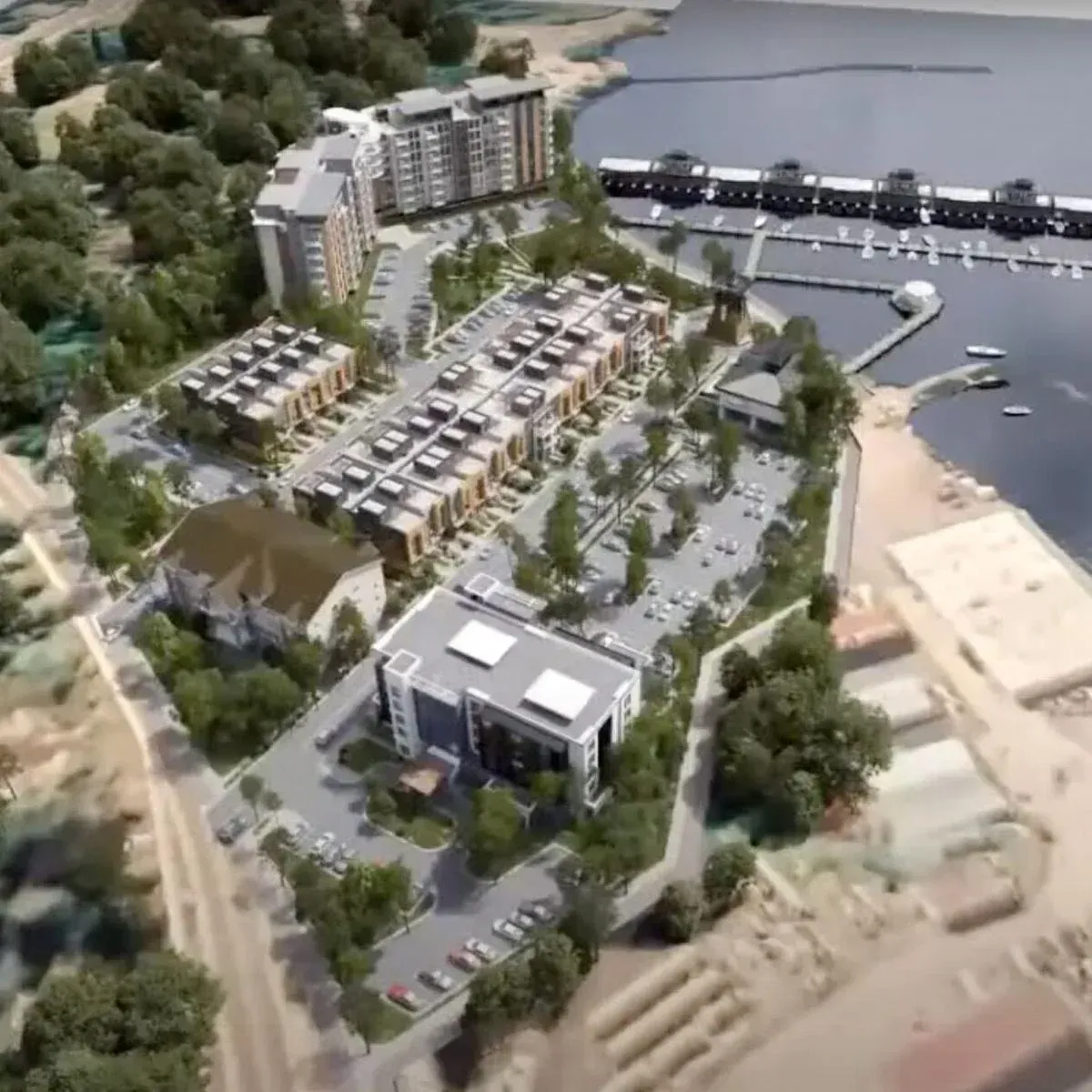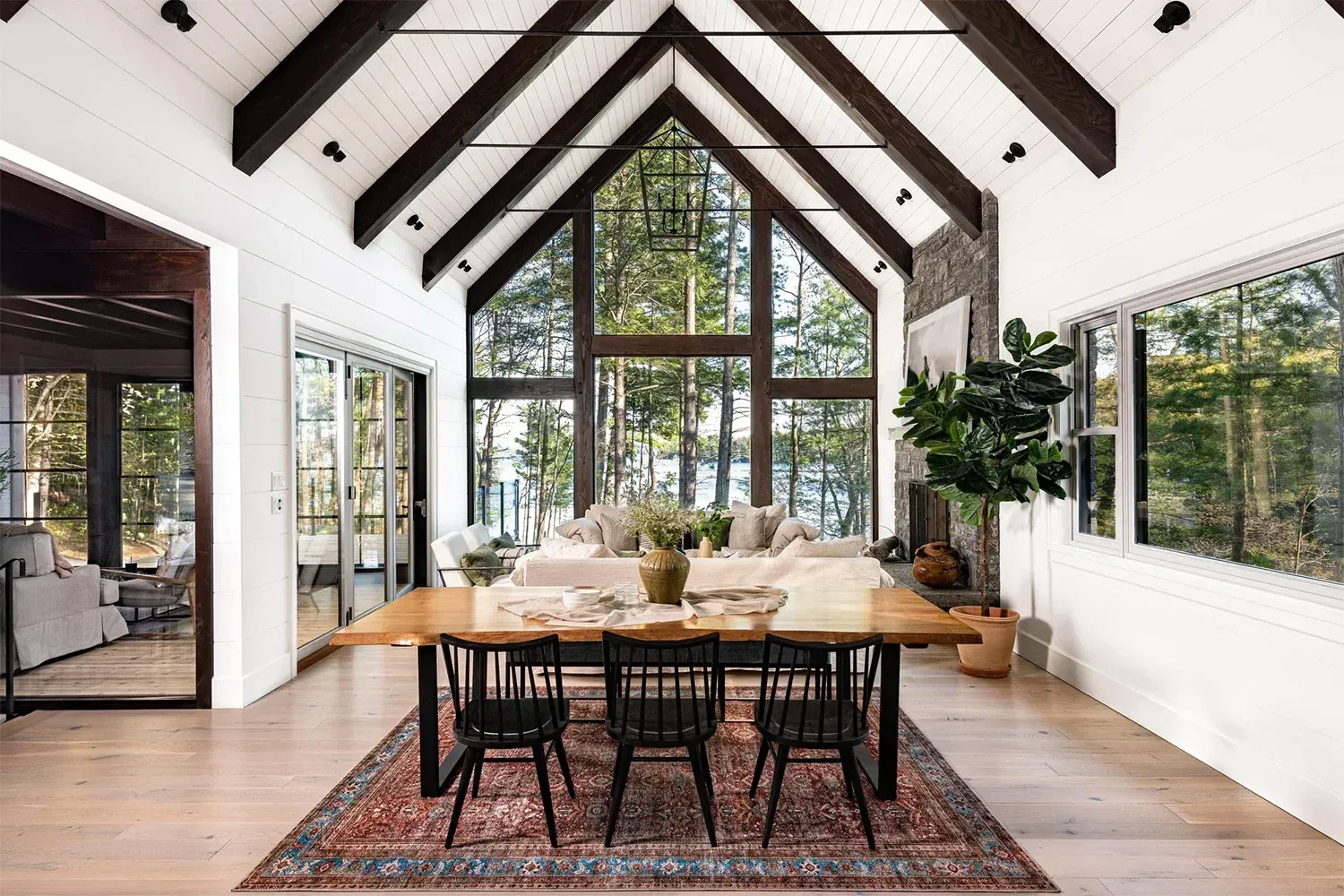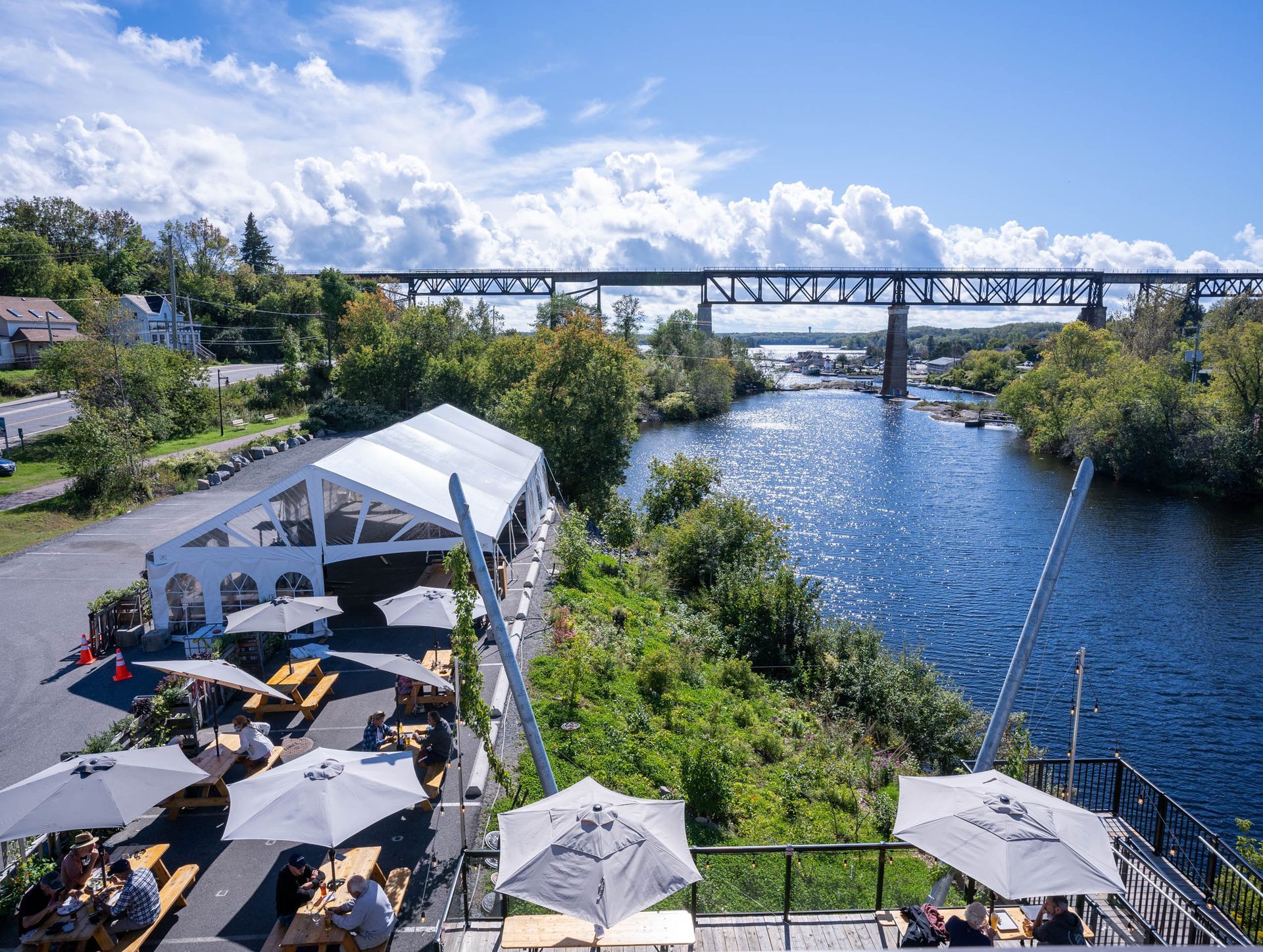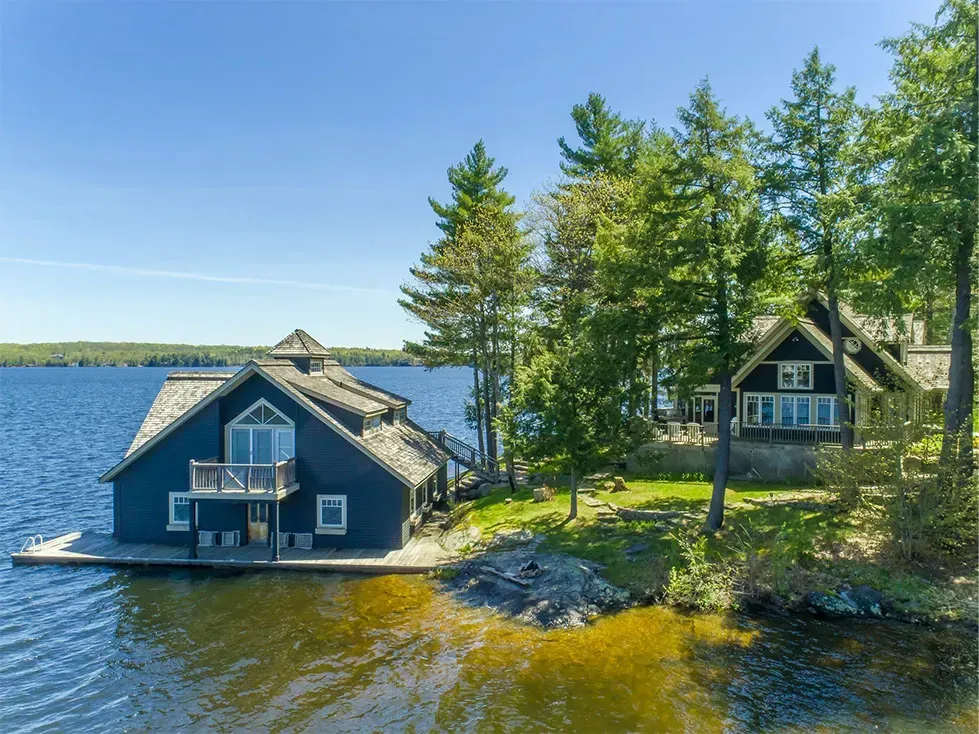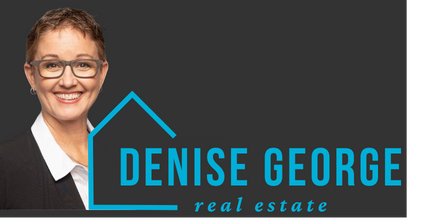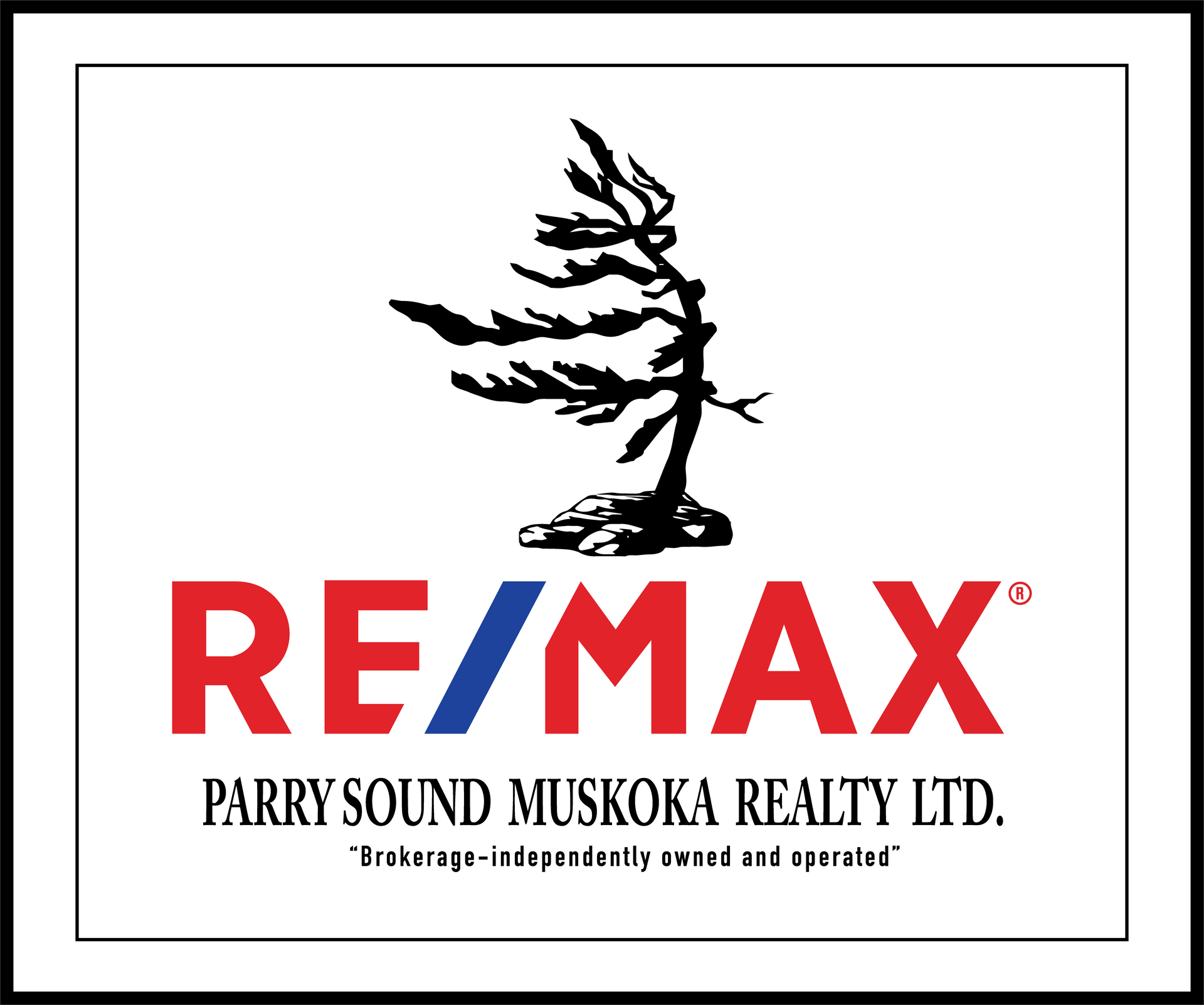How to Leverage Local Tourism for Real Estate Investments in Georgian Bay
Tapping Into the Growing Visitor Economy for Sustainable Investment Returns

Georgian Bay, with its stunning coastline, 30,000 islands, and crystal-clear waters, has long been a cherished destination for tourists seeking natural beauty and outdoor adventure. For savvy real estate investors, this flourishing tourism market presents unique opportunities that extend well beyond traditional residential or commercial investments.
The region's growing popularity among both domestic and international travelers has created an ecosystem ripe for strategic real estate investments. From vacation rentals to commercial properties serving tourists, understanding how to leverage this tourism boom can significantly enhance your investment portfolio's performance.
Understanding Georgian Bay's Tourism Landscape
Before diving into specific investment strategies, it's essential to understand what drives tourism in Georgian Bay and how these factors influence real estate opportunities.
The Tourism Growth Trajectory
Georgian Bay tourism has shown remarkable resilience and growth over the past decade, with several factors contributing to its continued expansion:
- Domestic Tourism Surge: More Canadians choosing local travel destinations over international options
- International Recognition: Growing awareness of Georgian Bay as a world-class destination
- Four-Season Appeal: Expanding beyond summer tourism to year-round activities
- Pandemic-Driven Changes: Increased interest in outdoor destinations and private accommodations
- Infrastructure Improvements: Better accessibility through highway enhancements and marina expansions
Recent tourism data indicates a 15-20% increase in visitor numbers over the past five years, with particularly strong growth in shoulder seasons. This trend is projected to continue as Georgian Bay's reputation as a premier destination solidifies.
Key Tourism Segments
Different types of tourists create various real estate investment opportunities:
- Recreational Boaters: Creating demand for waterfront properties with docking facilities
- Outdoor Enthusiasts: Driving interest in properties near hiking trails, parks, and conservation areas
- Family Vacationers: Seeking rental accommodations with multiple bedrooms and family-friendly amenities
- Luxury Travelers: Creating market demand for high-end properties and experiences
- Winter Tourists: Supporting year-round rental potential in areas with winter activities
Understanding which tourism segments dominate in specific Georgian Bay communities helps target investments for maximum returns.
Tourism Hotspots vs. Emerging Areas
While established destinations like Tobermory, Parry Sound, and Midland continue to attract steady tourism, several emerging areas show strong investment potential:
- Pointe au Baril: Growing popularity among boaters looking for less crowded waters
- Christian Island/Beausoleil: Increasing day-trip tourism creating opportunities in nearby mainland areas
- Honey Harbour: Developing as a gateway to Georgian Bay's island communities
These emerging areas often represent better value for initial investment while offering strong growth potential as tourism expands.
Investment Strategies Based on Tourism Patterns
With this foundational understanding, let's explore specific investment strategies that leverage Georgian Bay's tourism trends.
1. Vacation Rental Properties: The Direct Approach
Vacation rentals remain one of the most straightforward ways to capitalize on tourism growth:
Waterfront Properties
Properties with direct water access continue to deliver the strongest returns, with premium features commanding significantly higher rental rates:
- Private Docks: Allow boat-access tourism and command 30-40% premium in rental rates
- Sandy Beaches: Particularly valuable for family rentals
- Sunset Exposure: Western-facing properties typically book faster and at higher rates
- Privacy: Secluded waterfront lots maintain higher occupancy during shoulder seasons
A well-positioned waterfront property can generate annual rental yields of 6-8% while also appreciating in value.
In-Town Properties
Not all successful vacation rentals require waterfront. Properties in charming towns like Thornbury, Penetanguishene, and Collingwood offer compelling investment opportunities:
- Walkability to Attractions: Properties within walking distance to restaurants, shops, and marinas command premium rates
- Unique Character: Historic homes converted to vacation rentals often achieve higher occupancy
- Lower Entry Costs: Generally more affordable than waterfront while still delivering strong returns
- Year-Round Rental Potential: Less seasonality than some waterfront properties
These properties often deliver more consistent cash flow throughout the year, with annual yields typically ranging from 5-7%.
Management Considerations
Successful vacation rental investments require either:
- Professional Management: Typically costing 20-30% of rental revenue
- Self-Management Systems: Requires time investment but preserves more rental income
- Co-Hosting Arrangements: Working with local residents who handle on-the-ground management for a reduced fee
Properties within one hour of major highways typically have more management options available.
2. Commercial Real Estate Serving Tourists
Beyond accommodations, tourists create demand for various commercial properties:
Food & Beverage Establishments
Restaurants, cafes, and breweries in tourist areas often outperform those in non-tourist locations:
- Seasonal Businesses: Operations focused on peak seasons, often with residential components for off-season revenue
- Hybrid Models: Combined cafe/retail/activity businesses that maximize revenue per square foot
- Location Premium: Waterfront or main street locations command significantly higher values but deliver proportionately higher returns
When evaluating these investments, focus on properties with flexible zoning that allow for multiple potential uses as tourism evolves.
Retail and Experience-Based Businesses
Properties housing businesses that serve tourist needs show strong performance:
- Adventure Outfitters: Locations suitable for kayak rentals, bike shops, and tour operators
- Artisan Retail: Properties supporting local craft and art sales
- Wellness Services: Spaces for spas, yoga studios, and similar services targeting vacationers
Commercial properties with both street frontage and water views typically command premium rents from tourism-based businesses.
Marina and Boating Infrastructure
With Georgian Bay's strong boating culture, marina-related investments offer unique opportunities:
- Slip Rental Properties: Marina slips with ownership models
- Marine Service Locations: Properties zoned for boat maintenance and storage
- Combined Marina/Accommodation Developments: Properties offering both boat slips and lodging
These specialized investments typically require more industry knowledge but can deliver returns of 8-10% in strong locations.
3. Development Projects Targeting Tourism Growth
For investors with larger capital pools, development projects offer significant upside potential:
Accommodation Developments
Purpose-built tourist accommodations continue to show strong returns:
- Boutique Resorts: Small-scale, high-end properties targeting luxury travelers
- Cottage Courts: Clusters of smaller individual units with shared amenities
- Glamping Developments: Low-impact accommodation on larger natural parcels
These projects typically require $1-5+ million investment but can deliver IRRs of 15-20% when well-executed.
Mixed-Use Developments
Projects combining tourist accommodations with commercial components often maximize return per square foot:
- Main Street Revitalization: Renovating historic buildings for combined retail/accommodation use
- Waterfront Developments: Marina/accommodation/retail combinations
- Adventure Hubs: Accommodation paired with activity centers
Municipalities throughout Georgian Bay increasingly favor these developments for their economic impact, often providing more streamlined approval processes.
4. Long-Term Residential with Seasonal Rental Components
Not all tourism-focused investments require full-time rental dedication:
Seasonal Home Strategies
Many investors are finding success with properties that serve both as personal vacation homes and part-time rentals:
- Premium Season Rentals: Using the property personally during off-peak times while renting during premium weeks
- Block Booking Strategies: Renting for 2-3 month blocks to seasonal visitors
- Snowbird Complement Properties: Summer rentals balanced with winter personal use
This approach can offset 50-70% of carrying costs while maintaining personal enjoyment of the property.
Retirement Transition Properties
Forward-thinking investors are purchasing future retirement properties that function as tourist rentals in the interim:
- Phased Retirement Planning: Gradually reducing rental periods as personal use increases
- Income-Producing Future Homes: Building equity and income until ready for permanent occupancy
- Renovation-Over-Time Strategy: Using rental income to fund ongoing improvements
This approach combines current income with long-term lifestyle planning.
Location Selection: Matching Property to Tourism Type
Successful tourism-focused investments require aligning property location with specific tourism patterns.
Established vs. Emerging Tourism Zones
Each presents distinct advantages and challenges:
Established Tourism Areas
- Higher Initial Investment: Property costs typically 20-30% higher
- Proven Rental History: More predictable returns
- Extensive Amenities: Infrastructure already in place
- Competitive Rental Market: May require more marketing to stand out
Top established areas include Tobermory, Wasaga Beach, and Parry Sound.
Emerging Tourism Areas
- Lower Entry Point: More affordable initial investment
- Higher Growth Potential: Possibility for stronger appreciation
- First-Mover Advantage: Opportunity to establish market position early
- Development Risk: Amenities and attractions may still be developing
Promising emerging areas include the southern Bay shore near Midland, the Pointe au Baril region, and the Christian Island vicinity.
Accessibility Considerations
Travel time from major population centres significantly impacts rental potential:
- Under 2 Hours from GTA: Supports weekend rentals year-round
- 2-3 Hours from GTA: Strong weekly rentals with some weekend business
- 3+ Hours from GTA: Primarily weekly rentals in peak season
Properties within 2 hours of the GTA typically achieve 15-25% more annual rental days than those farther away.
Infrastructure and Amenity Access
Proximity to key amenities drives both rental rates and occupancy:
- Water Access: Direct access commands premium, but even properties within walking distance see benefits
- Restaurant Proximity: Properties within 15 minutes of dining options rent more consistently
- Activity Access: Closeness to hiking trails, beaches, and boat launches enhances appeal
- Essential Services: Properties within 20 minutes of grocery stores and medical services reduce guest anxiety
The ideal investment balances natural seclusion with practical amenity access.
Navigating Regulatory Considerations
Tourism-focused real estate investments require careful attention to regulatory factors:
Short-Term Rental Regulations
Municipalities throughout Georgian Bay are increasingly implementing specific regulations:
- Licensing Requirements: Many townships now require special licenses for short-term rentals
- Occupancy Limits: Restrictions on guest numbers based on bedroom count and septic capacity
- Safety Standards: Enhanced requirements for fire safety and emergency exits
- Noise Ordinances: Increasingly strict enforcement in tourist areas
- Taxation: Municipal accommodation taxes being implemented in some regions
Staying ahead of these regulations is crucial, as non-compliance penalties can be substantial.
Zoning Considerations
Proper zoning dramatically impacts investment potential:
- Commercial vs. Residential Zoning: Affects permissible rental and business activities
- Waterfront Development Restrictions: Increasingly strict limitations on shoreline modifications
- Density Requirements: Limitations on building size and occupancy
- Environmental Protection Zones: Restrictions near sensitive habitats
Due diligence regarding current and planned zoning is essential before any tourism-focused investment.
Indigenous Land Considerations
Some of Georgian Bay's most beautiful areas involve or border Indigenous territories:
- Treaty Rights: Understanding existing treaties and their implications
- Partnership Opportunities: Potential for collaborative development with First Nations
- Access Considerations: Respecting traditional territories and usage
Respectful engagement and proper legal guidance are essential when investing near Indigenous lands.
Financial Considerations for Tourism-Based Investments
Understanding the financial dynamics unique to tourism-based real estate is crucial for success.
Seasonal Cash Flow Management
The highly seasonal nature of Georgian Bay tourism creates distinct financial patterns:
- Peak Season Intensity: 60-70% of annual revenue often generated in 10-12 weeks
- Shoulder Season Development: Strategies to extend revenue-generating periods
- Off-Season Carrying Costs: Planning for minimal revenue periods
- Reserve Requirements: Higher contingency funds needed than for traditional rentals
Successful investors maintain 3-6 months of carrying costs in reserve to manage seasonal fluctuations.
Financing Considerations
Tourism-focused properties often have different financing parameters:
- Higher Down Payment Requirements: Typically 30-35% for vacation rentals versus 20% for primary residences
- Cash Flow Analysis: Lenders increasingly requiring Tourism Viability Assessments
- Secondary Property Implications: Different mortgage stress test requirements
- Commercial Financing: Different terms for properties zoned commercial
Working with lenders experienced in tourism properties improves financing terms and approval rates.
Return Metrics Specific to Tourism Properties
Evaluating tourism-based real estate requires specialized metrics:
- RevPAR (Revenue Per Available Room/Rental): Measures efficiency of rental income
- Seasonality Index: Ratio of peak season to annual average daily rate
- Tourist-to-Local Rate Ratio: Difference between rates charged to tourists versus local market rents
- Gross Rent Multiplier for Tourist Areas: Purchase price divided by gross annual rental income
These tourism-specific metrics provide more accurate return projections than general real estate metrics.
Risk Mitigation Strategies
Tourism-based investments carry unique risks requiring specific mitigation approaches.
Diversification Within Tourism
Reducing risk through internal diversification:
- Mixed Rental Strategies: Combining short, medium, and occasional long-term rentals
- Multiple Target Markets: Appealing to different tourist segments
- Seasonal Rebalancing: Adjusting marketing to capture different seasonal visitors
- Amenity Diversification: Adding features appealing in different seasons
Properties versatile enough to serve multiple tourism segments consistently outperform single-focus investments.
Insurance and Liability Management
Tourism properties require enhanced protection:
- Commercial Rental Coverage: Standard homeowner policies rarely cover tourist rentals
- Liability Extensions: Higher coverage limits for guest injuries
- Business Interruption Insurance: Protection against unexpected rental disruptions
- Specialized Contents Coverage: Protection for furnishings and equipment
Comprehensive insurance typically adds 1.5-2.5% to annual operating costs but provides essential protection.
Exit Strategy Planning
Tourism trends can shift, making exit planning crucial:
- Holding Period Targets: Most tourism investments perform best with 7-10 year minimum horizons
- Conversion Flexibility: Properties that can convert between different uses maintain value
- Buyer Pool Understanding: Identifying likely future buyers (investors vs. end-users)
- Value-Add Opportunities: Enhancements that address future buyer preferences
The most successful tourism property investors begin with the end in mind, even while focusing on current returns.
Case Studies: Successful Georgian Bay Tourism Investments
The Tobermory Cottage Compound
A former family compound with three cottages on five acres was purchased for $1.2M and renovated for $350K. The property now generates:
- $175K annual rental revenue across the three units
- 85% occupancy June through September
- 40% occupancy during shoulder seasons
- Approximately $110K net operating income after expenses
Key success factors: Waterfront location, multiple units allowing family group rentals, and premium but rustic aesthetic matching visitor expectations.
Parry Sound Historic Building Conversion
A historic downtown building was purchased for $550K and converted into a mixed-use property with ground-floor commercial and two second-floor vacation rentals for $400K in renovations. The property now produces:
- $45K annual revenue from commercial tenant
- $70K annual revenue from vacation rentals
- 75% annual occupancy in rental units
- Approximately $85K net operating income
Key success factors: Walkable downtown location, historic character preservation, and flexible space design.
Meaford Agri-Tourism Development
A 15-acre former farm near cycling trails was purchased for $680K and developed into a glamping retreat with six luxury canvas structures and a central pavilion for $420K. The property now generates:
- $210K annual revenue with premium nightly rates
- 90% occupancy July through August
- 60% weekend occupancy April through October
- Approximately $120K net operating income
Key success factors: Unique accommodation concept, proximity to recreational trails, and authentic farm-to-table experiences.
Future Trends Shaping Georgian Bay Tourism Investments
Looking ahead, several emerging trends will shape investment opportunities:
Eco-Tourism Growth
Increasing interest in environmentally sustainable tourism creates opportunities for:
- Low-impact development concepts
- Carbon-neutral accommodations
- Nature immersion experiences
- Conservation-oriented properties
Properties embracing sustainable design and operations are seeing 15-25% premium in both rates and occupancy.
Experience-Based Tourism
Beyond basic accommodations, tourists increasingly seek integrated experiences:
- Culinary tourism creating demand for properties with teaching kitchens
- Wellness retreats requiring specialized spaces
- Adventure tourism hubs with equipment storage and staging areas
- Cultural experience centres celebrating local heritage
Properties designed to facilitate these experiences command premium rates and enjoy extended seasons.
Remote Work Integration
The boom in remote work creates opportunities for:
- Extended-stay properties with dedicated workspaces
- Community-focused developments with co-working amenities
- High-speed internet as a critical amenity
- Hybrid accommodation/workspace concepts
Properties well-equipped for the "workation" (work/vacation) trend are seeing booking durations increase by 30-40%.
Conclusion: Building a Strategic Tourism-Based Real Estate Portfolio
Georgian Bay's tourism growth presents compelling investment opportunities for those who approach the market strategically. Success in this specialized real estate niche requires:
- Deep Local Knowledge: Understanding specific tourism patterns in different Bay communities
- Tourism Trend Awareness: Recognizing shifting visitor preferences and demographics
- Regulatory Vigilance: Staying ahead of changing rules affecting tourism properties
- Financial Discipline: Managing seasonal cash flow and operating reserves
- Marketing Expertise: Effectively positioning properties to target the right visitor segments
- Operational Excellence: Delivering exceptional guest experiences that drive reviews and rebookings
By aligning investment choices with tourism trends and applying these principles, investors can build a portfolio that not only delivers strong returns but also contributes positively to Georgian Bay's tourism ecosystem.
Whether you're considering your first tourism-focused property or expanding an existing portfolio, the Georgian Bay region offers diverse opportunities tied to its growing popularity as a premier destination. With proper research, strategic selection, and diligent management, these investments can deliver both financial rewards and the satisfaction of providing memorable experiences for visitors to this spectacular region.
Ready to Capitalize on Georgian Bay's Tourism Boom?
Contact Denise to learn how to leverage your real estate investments with Georgian Bay's growing tourism market. With her extensive knowledge of the region's tourism patterns, regulatory landscape, and investment opportunities, Denise can help you identify properties positioned for strong returns in this dynamic market.
